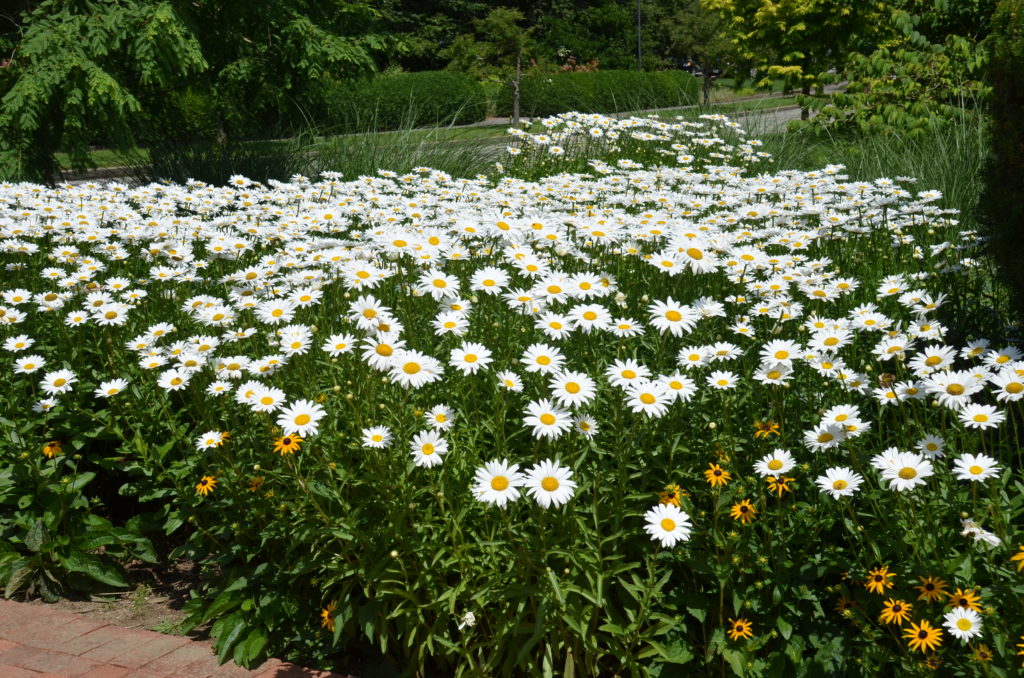
Shasta daisies (Leucanthemum x superbum) is a European native that has naturalized in most areas of North America (zones 5-9). Truly low care perennials, Shasta daisies come back every spring and bloom reliably from early summer into early fall (if deadheaded). Some varieties, ‘Becky’ for example, are multi-year top performers.
Shasta daisies tend to form clumps, 2 to 3 feet tall and 1 to 2 feet wide. They bear all-white daisy petals, yellow disk florets, along with glossy, dark green leaves. Shasta daisies make terrific cut flowers, and their blooms last a week or more in arrangements. As flowers fade, deadhead to extend the blooming season. After the first killing frost, cut stems back to 1-2 inches above the soil line.
Shasta daisies grow in average, well-drained soil. At planting time, work in lots of compost around the plants. Feed plants with a slow-release fertilizer like Osmocote™ if flowers numbers are low or small sized. Be careful, over-feeding can lead to an abundance of foliage and a lack of flowers. One-year old established Shasta daisies are drought tolerant, but weekly irrigation with an inch of water weekly over the summer.
Purchase disease resistant varieties. Divide clumps every 4-5 years to avoid crowding. Occasionally, plants may be troubled by aphids, leaf miners, powdery mildew, bacterial spots, gray mold (botrytis), and Japanese beetles.
Recommended varieties:
‘Becky’ – large flowers grow 3 – 3.5 feet tall; considered the “standard” among Shasta daisy varieties.
‘Cream Puff’ –lemon yellow buds, large 3-4 inch creamy flowers; creamy tight compact 14-16 inch tall.
‘Whoops-a Daisy’ – full 2-3 inch wide white blossoms; uniform compact plant habit (15 inches x 22 inches).
Caveat: Some varieties may spread from seed. Choose reliable hybrid varieties that don’t produce viable seed or remove flowers before they go to seed.
Growing Shasta Daisies

 Posted in
Posted in 
